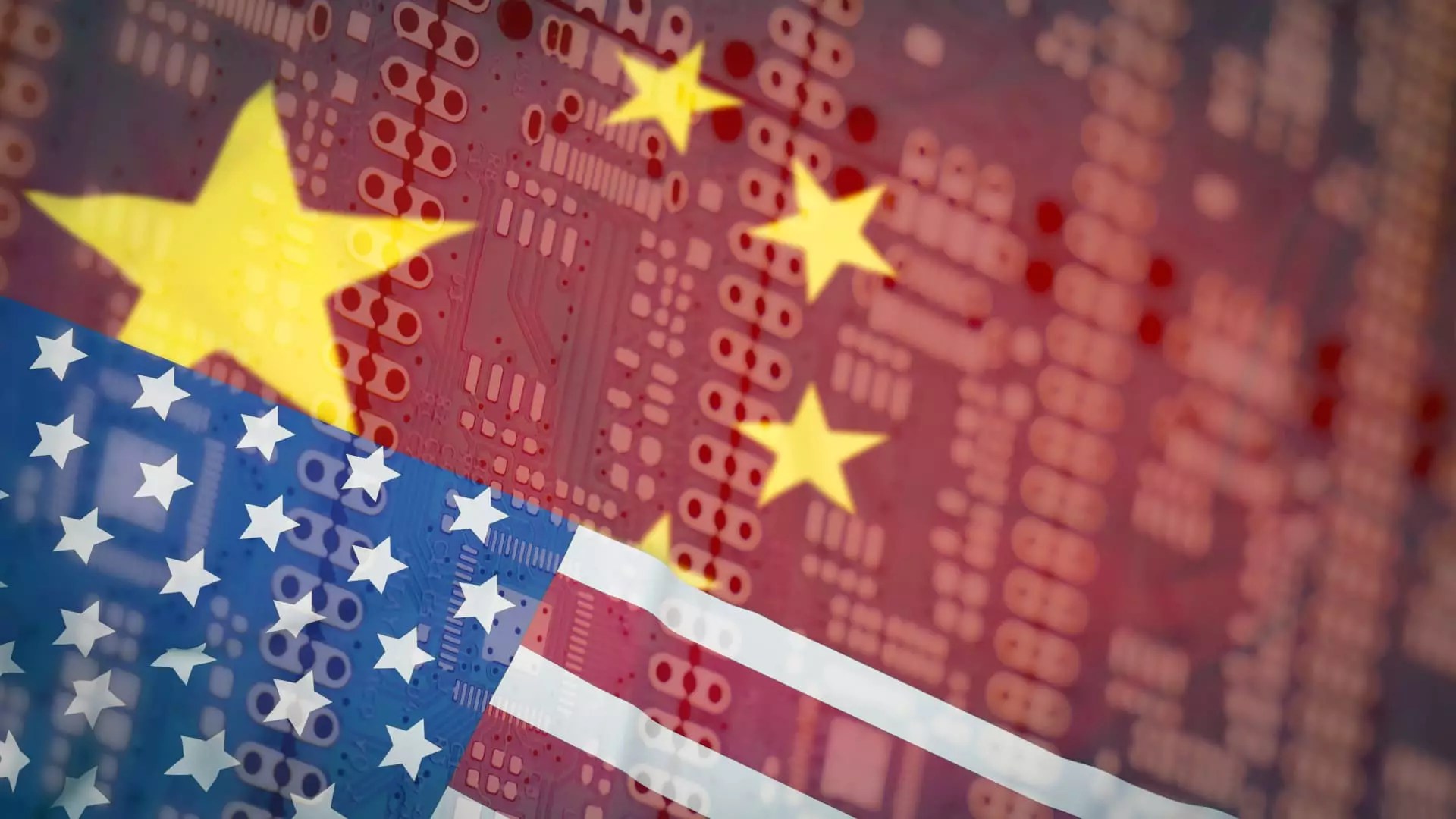The ongoing technological rivalry between the United States and China has escalated into a fierce battle within the realm of artificial intelligence (AI). Tencent and Baidu, two of China’s tech giants, are not merely spectators; they have pivoted their strategies to stay competitive despite U.S. restrictions on semiconductor exports. While American policies aim to stifle China’s technological ascent, Tencent and Baidu are displaying a remarkable resilience that deserves scrutiny. As they stockpile chips and refine their algorithms, one must wonder: are these tactics a mere stopgap or a sustainable foundation for innovation?
In this high-stakes game, semiconductor chips have become the currency of power and influence. Graphics Processing Units (GPUs) are at the heart of AI model training, serving as the backbone for computational efficiency. Martin Lau, president of Tencent, claims the company possesses a “pretty strong stockpile” of these chips, potentially bolstering their AI capabilities even in the face of international restrictions. By optimizing existing resources rather than increasing dependency on more chips, Tencent illustrates a mindset that shifts the focus from mere acquisition to strategic utilization.
Strategic Efficiency Over Size
Lau’s assertion that robust AI models can be developed with fewer GPUs challenges the conventional wisdom dominating the industry. It resonates with a fundamental belief that excess often leads to inefficiencies, a notion that could redefine approaches within tech ecosystems. “We should have enough high-end chips to continue our training of models for a few more generations going forward,” Lau argues, placing emphasis on the optimization of existing technology and shifting attention from a purely hardware-centric approach to sustainable software development.
This perspective raises an essential question: Is it possible that the true key to achieving AI excellence lies in the mastery of efficiency rather than the volume of hardware? Tencent’s experiments with smaller AI models and software optimization suggest that the company aims not merely to adapt but to innovate within constraints. By focusing on these alternative methods, Tencent sidesteps the limitations imposed by U.S. sanctions, turning what once appeared to be a competitive disadvantage into a potential advantage.
Baidu’s Comprehensive Solutions
Baidu offers a complementary vision of resilience through its “full-stack” capabilities. With its own cloud infrastructure and an extensive suite of applications, Baidu echoes the notion of resourcefulness that echoes throughout China’s tech landscape. The company’s president, Dou Shen, highlights their unique position to deliver meaningful AI services, even with restricted access to advanced hardware.
Baidu’s strategic positioning suggests a growing confidence in domestic technology capabilities. As Shen noted, their ability to optimize existing GPU resources serves not just to mitigate U.S. pressures but also showcases an emerging self-sufficiency that could disrupt traditional power dynamics in the tech world. The mention of domestically developed semiconductors also signals a commitment to building an independent ecosystem, reducing reliance on external suppliers, especially in strategic sectors like AI.
The Glass Ceiling of Semiconductor Development
However, it would be naïve to suggest that China is on the verge of outpacing the U.S. in AI or semiconductor technology. While some progress in self-sufficient chip production is evident, experts remain cautious about drawing definitive conclusions. Gaurav Gupta of Gartner emphasized that while strides have been made, they are still trailing far behind American counterparts. Various segments of China’s semiconductor industry are seeking to advance from materials through to manufacturing, but the journey is long and fraught with challenges.
An essential insight here is that each step taken toward semiconductor independence may not only fortify China’s tech infrastructure but could also accelerate the competitiveness of its global ambitions. Even if Chinese firms cannot yet rival the best in the U.S., the mere act of pursuing self-sufficiency is a monumental shift that signifies a willingness to innovate under duress.
The Dissonance of American Policies
Amid these developments, many U.S. technology executives are increasingly vocal about the potential pitfalls of export restrictions. Nvidia CEO Jensen Huang labeled these policies a “failure,” arguing that they could end up harming American businesses more than their intended target—China. This notion introduces an uncomfortable truth about the ramifications of stringent sanctions: they may inadvertently empower the very competition the U.S. seeks to contain.
By propelling Chinese companies to innovate and adapt, U.S. policies may have created an environment where resourcefulness can thrive. It sparks an ironic reflection on whether, in trying to stave off competition, America is inadvertently catalyzing a rapid evolution within these foreign entities.
In this context, China’s AI strategies, underscored by resilient adaptation tactics such as stockpiling, software optimization, and a focus on domestic innovation, illuminate an evolving landscape. Companies like Tencent and Baidu are not merely responding to external pressures; they are crafting an intricate dance of innovation that could redefine the global AI narrative in the years to come.


Leave a Reply